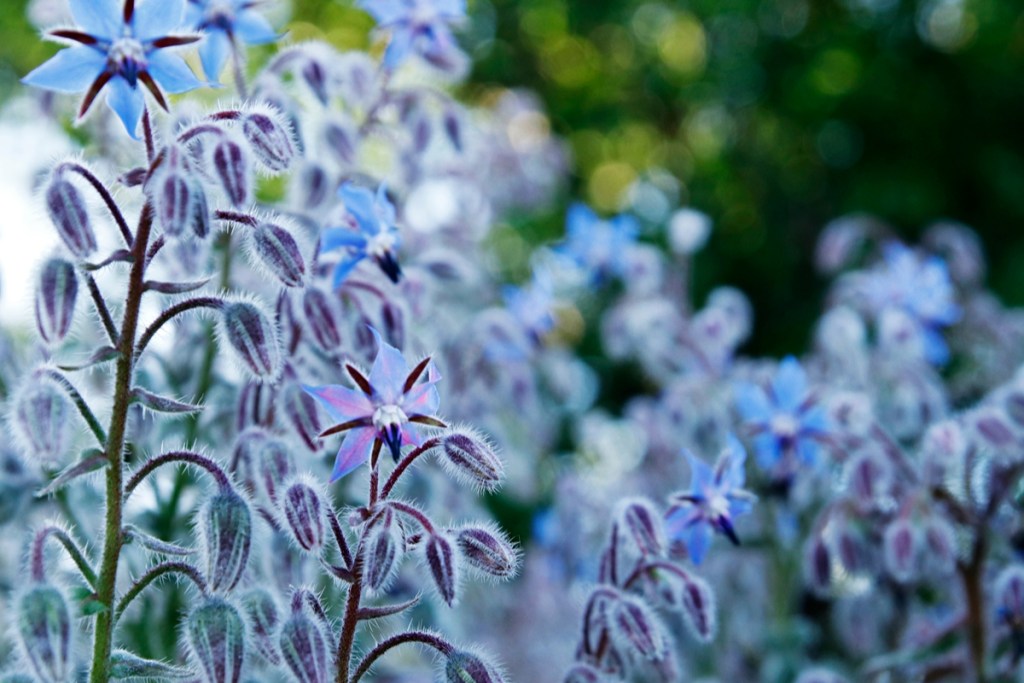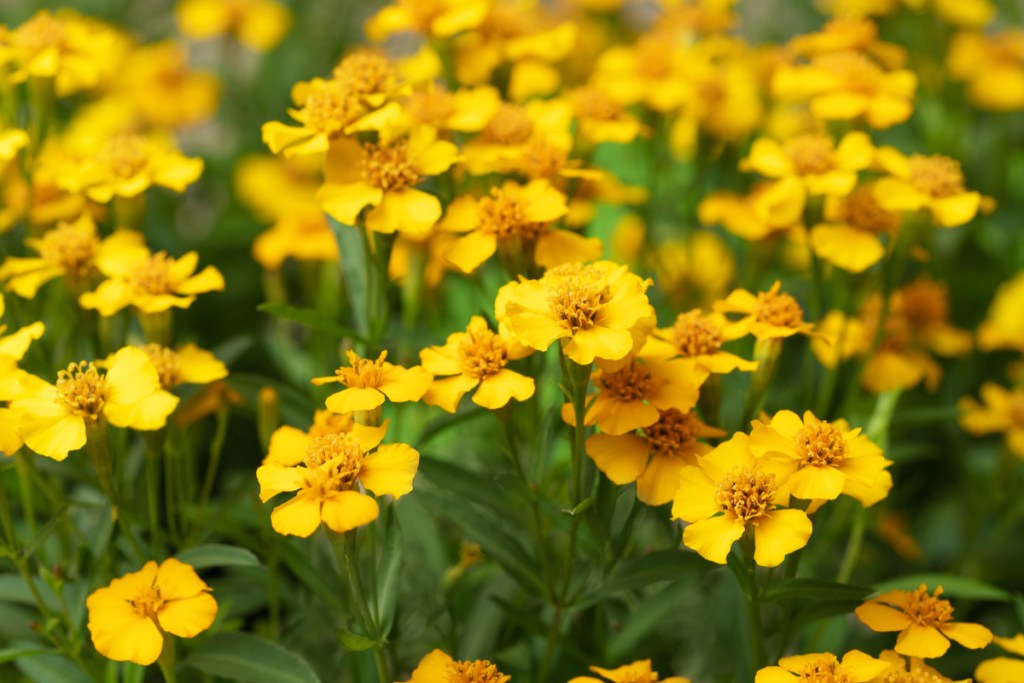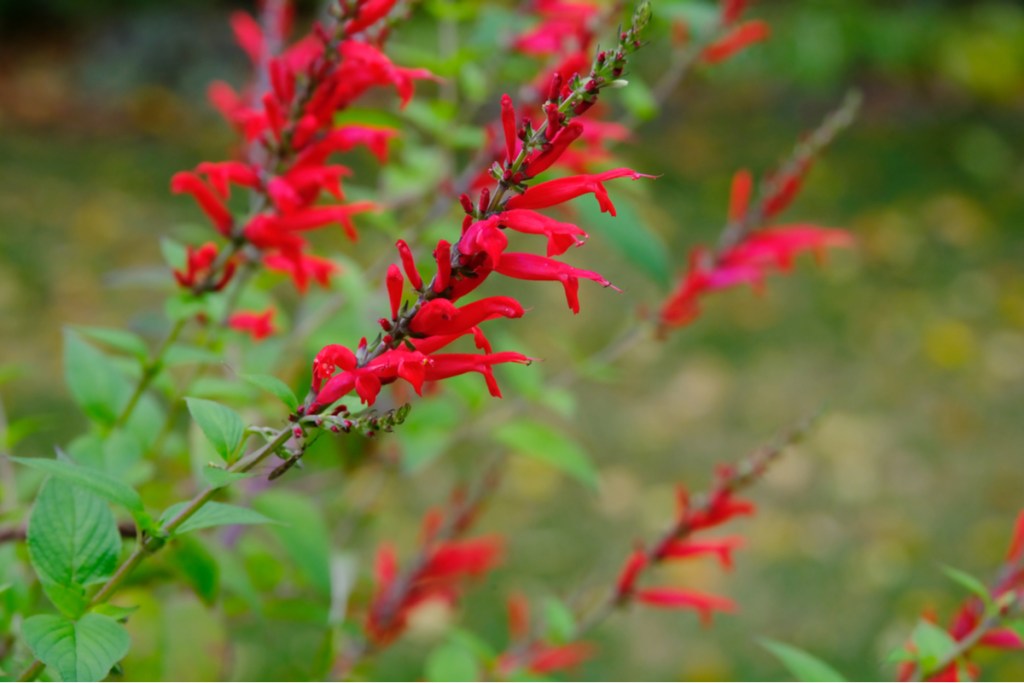
Growing herbs rewards gardeners in several ways. Herbs offer up their fragrance any time you brush against their foliage, so the garden always smells better. Many types attract beneficial insects, like pollinators and predatory species, that improve the garden for other plants. Some herbs even repel mosquitoes and other pests. Then, of course, there are the many ways they can be used after harvest to lend their flavors, aromas, and healing properties to your life.
Unfortunately, it’s easy to get stuck in a rut. Once you’ve mastered the art of growing basil, dill, rosemary, thyme, oregano, parsley, sage, and mint, what’s next? If you’re looking for inspiration, we’ve got a few ideas. Why not try out a few of these unusual herbs.
Borage, Borago officinalis
Also known as starflower because of its bright blue, five-petaled blossoms that are loved by bees, borage is an easy-to-grow annual. The tender, immature foliage is edible, but it matures with a coating of bristly hairs. The young leaves have a cucumber-like flavor, and make an excellent addition to sandwiches and soups. The delicate flowers are often used to garnish salads or crystallized to decorate cakes.
Direct-sow borage seeds in a well-drained, sunny location in late spring. In its native Mediterranean environment, it grows equally well in rocky wasteland and cultivated soil. The plants average 2 feet tall, but may grow taller in rich soil.
Epazote, Dysphania ambrosioides
Epazote is an annual native herb of Southern Mexico, Central America, and South America. As a fresh leaf vegetable or herb, it adds a strong, uniquely pungent aroma and flavor to beans, rice, and other regional foods such as quesadillas, tamales, chilaquiles, and enchiladas. The complex flavor profile includes elements of citrus, savory, mint, and creosote.
Start the seeds indoors, or sow them directly in the garden when temperatures are consistently above 70 degrees. After germination, which takes about two weeks, thin the seedlings to 6 inches apart. The plants grow to about 4 feet tall in average conditions. Make successive sowings every three weeks or so for a constant supply of fresh leaves.
Sorrel, Rumex acetosa
Sorrel is a clumping perennial herb with tangy, bright green foliage. One of the earliest recorded uses was as a curative for nettle stings, but the high vitamin C content makes it especially nutritious. The fresh leaves add a citrus-like acid flavor to salads, soups, sauces, and scrambled eggs.
Look for improved varieties, like French sorrel, that won’t flower and go to seed as quickly as the species. Divide and transplant, or sow seeds directly in a sunny garden plot in spring or fall. The plants grow to 20 inches tall and wide.
Lovage, Levisticum officinale
“Love Parsley” may have been associated with aphrodisiacs in the middle ages, but its real value is in its flavor. The name is simply a linguistic victim of multiple translations, from Ligurian (from the area of Italy, Liguria, where this herb is native) to ligusticum, levisticum, luvesche, and finally “lovage.” The young shoots of lovage are used like celery, and the foliage makes an excellent addition to most savory dishes.
Plant this vigorous perennial in a sunny to partial shade area with moist, rich, well-drained soil. It grows 4 to 6 feet tall in ideal growing conditions.

Mexican tarragon, Tagetes lucida
Mexican tarragon is one of several herbs that can take the place of true tarragon (Artemisia dracunculus) in a pinch. This rugged, perennial marigold offers an anise like flavor that tastes great in salads, sauces, and especially chicken dishes. As an added bonus, you can use the bright yellow flower petals to give rice a saffron-like color.
Mexican tarragon grows into a 12 to 30 inch mound, with finely toothed leaves and bright, golden yellow flowers. It prefers full sun and tolerates dry soil conditions fairly well. It grows well from seed or cuttings, and is becoming more commonly available as a seedling for sale in garden centers.
Perilla, Perilla frutescens
Fans of Japanese cuisine will instantly recognize the aroma and flavor of perilla, also known as shiso. The leaves are traditionally eaten raw or pickled and used as a wrap or garnish for meat and fish. They’re also chopped and mixed with grated horseradish to garnish steak, hence the nickname, “Beefsteak Plant.” The seeds, and even the essential oils, permeate Japanese recipes in seemingly endless ways.
Perilla is a frost-hardy annual that has naturalized in much of the United States. It grows freely from seed in sunny and shady locations with moist, light, well-drained soil. Do not cover sown seeds, as they need light to germinate.

Pineapple sage, Salvia splendens
Pineapple sage gets its exotic name from its distinctly pineapple-scented foliage. Use the young, tender leaves in salads, or chop it up and use it to flavor any number of sweet or savory dishes. The foliage can also be steeped in hot water and sweetened with honey to make a refreshing tea that aids digestion. Plus, the vivid red flowers are absolute magnets for hummingbirds and butterflies.
Plant this tender perennial in full sun with average soil. It loves the heat, where it can grow to 4 feet tall.
Vietnamese Coriander, Persicaria odorata
Vietnamese coriander is an evergreen perennial from tropical southeast Asia, with foliage that smells just like cilantro. In Vietnamese recipes, the leaves are used to season meat, fish, and duck eggs. They’re also used to lend a cilantro-like flavor to other dishes. If you’ve grown cilantro, only to have it bolt in about three weeks, Vietnamese Coriander may be a good alternative for you. It thrives in the heat and continues to produce fresh foliage all summer.
This tropical perennial can’t tolerate temperatures below about 45 degrees Fahrenheit. Grow it in a pot and bring it indoors, or treat it like an annual. It’s easy to propagate from stem cuttings, so you could grow it in the garden and take cuttings for fall and winter use.
Editors' Recommendations
- The best little flowers to grow when you’re low on space – plant these this spring
- Have a gross mealybug infestation on your plants? Try one of these remedies
- These plants should be among the first you plant this year
- Have you ever wondered if potatoes are fruits or vegetables? We have answers
- Gardening 101: 7 easy seeds to grow in cups for a tiny, adorable, and low-maintenance indoor garden




